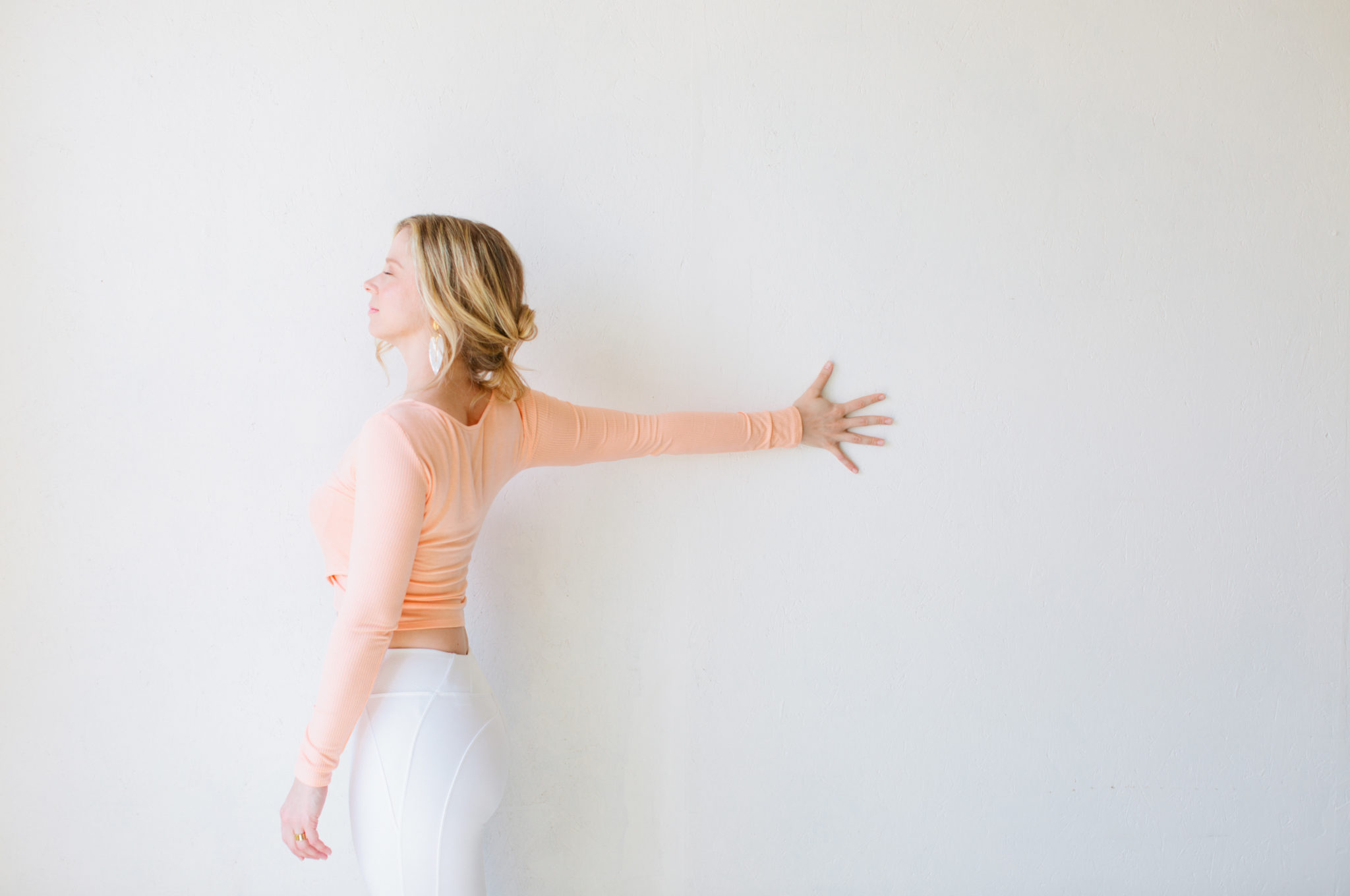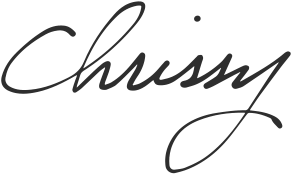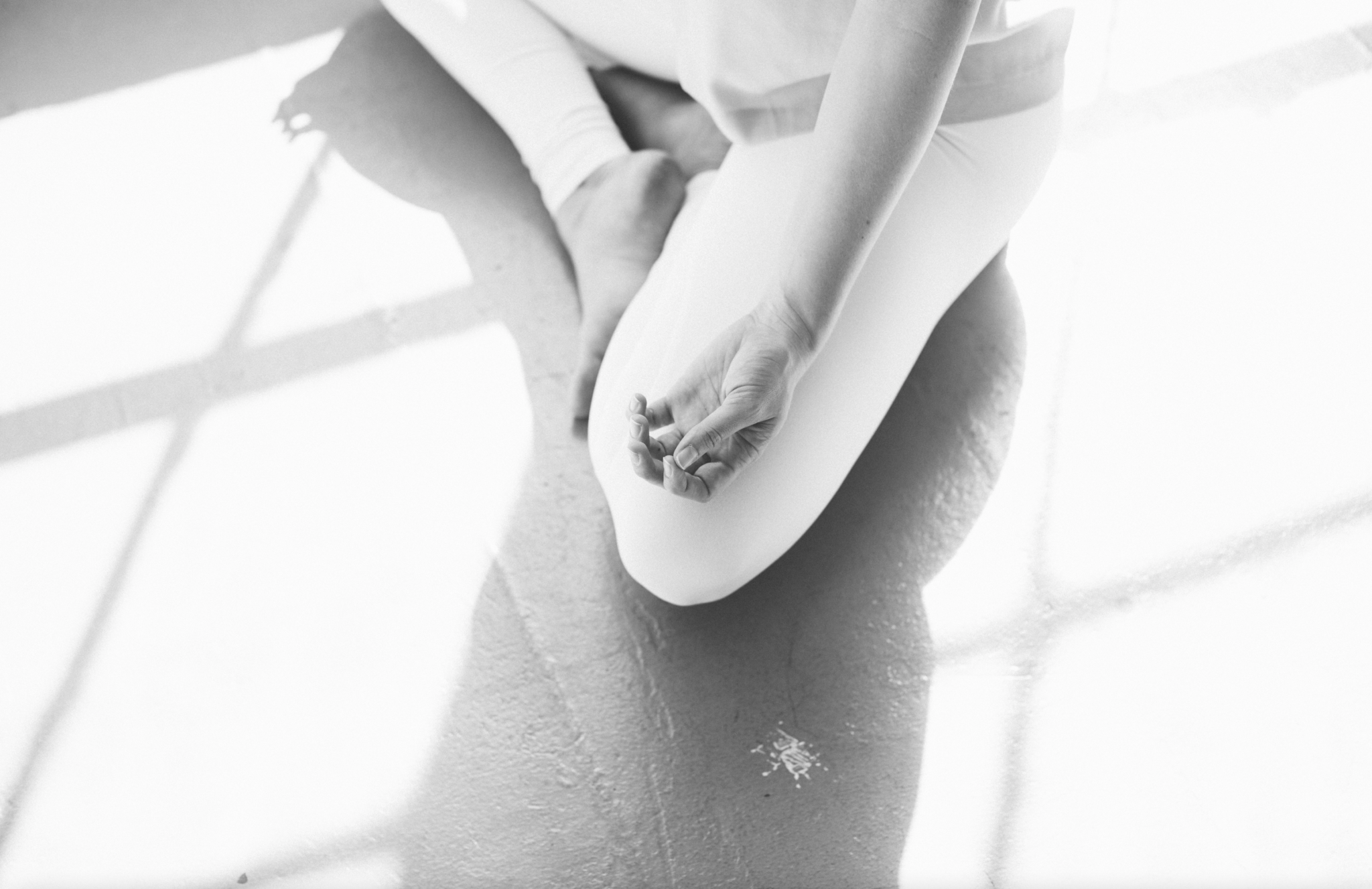Asana is defined as a balance of steadiness and ease. The same practice can be applied to our joints. Healthy shoulders are both stable and spacious, but many of us come to the mat with limited ranges of motion due to our postural patterns, as well as joint dysfunction due to muscular imbalances. Gomukhasana, or Cow Face arms, is a fantastic shoulder opener that can not only improve your posture but also support almost every single aspect of your asana practice.
Many students struggle to access proper alignment in the pose. Favoring range of motion over integrity, students will often do anything to get their fingers to touch. They might drop their head, excessively rotate the bottom arm internally, wing the scapula of the bottom arm, internally rotate the upper arm and jam the head of that humerus into their armpit. “But look, my fingers touch!” An understanding of the arm’s relationship to the position of the shoulder blades (scapulae) can help minimize the struggle and potential injury that comes when we prioritize the goal over the process.
The shoulder blades glide in multiple directions against the back ribs: they move together and apart (retraction and protraction), up and down (elevation and depression), and they spin upwards and downwards to facilitate the lifting and lowering of the arms (upward rotation and downward rotation). They can also tilt in different directions, much like a plant angling to soak up the sun. The outer-most (lateral) border of the shoulder blades house the socket (glenoid fossa) into which the arm bone (humerus) connects. These two articulating bones form the shoulder joint (glenohumeral joint). The position of the shoulder blades on the upper back determines the orientation of the socket and therefore, the position of the arms. If the scapulae are allowed to collapse apart (due to weak/uneducated muscles of the upper back) or if the scapulae are pulled apart (due to tight muscles of the chest and/or the front of the shoulder), the arm bones are dragged along for the ride. The rounded back and collapsed chest results in the skull protruding forward of the spine, a common postural issue called Upper Cross Syndrome. This postural habit is often accompanied by what’s called “winging” of the scapulae, which means that the inner (medial) border of the shoulder blades have pulled away from the back ribs—an unstable place from which to practice any weight-bearing asana.
When moving the bottom arm into Gomukasana, rather than trying to slam the shoulder back, think of integrating the humerus into the socket and then moving from the shoulder blade rather than the arm. In my own practice, I first draw the upper arm bone up to “plug” into its socket, the way the power cord plugs magnetically into my Apple laptop. From this place I can start working the medial border of the scapula forward onto my back ribs while I work the lateral border of the scapula gently away from my back ribs. This careful movement corrects the “winging” and subsequently orients the glenoid fossa into a more lateral position. This, in turn, draws my humerus back to its rightful place alongside my body. I’m careful to listen for any strain at the front of my shoulder, which is a sign that the tightness in my chest and/or shoulder has put the breaks on my effort to stabilize my shoulder blade.
To that end, it’s important to incorporate stretches for the front body so that there’s enough space to allow for the work. Here are a few of my personal favorites!
Wall Stretch
Place your hand on a wall at shoulder height and stand an arm’s-length away from the wall. Lift the shoulder slightly up and then gently roll it back and down. Maintain the opening across the front of the chest while you slowly turn your body any amount away from the wall. You may not move very far, so let go of lofty expectations of having your chest facing the center of the room. Be aware that as you turn the tendency will be for your shoulder to lift and for the arm to internally rotate, so move at a glacial pace and be patient. You should be able to breathe and relax into the stretch. To up the ante, you can externally-rotate the arm and turn the palm out 45 degrees on the wall.
Flossing the Shoulders
As we all know, we should be flossing everyday – not only our teeth, but our shoulders, too! For this exercise you’ll need a yoga strap (or a long belt from your closet). Stand with the feet hip-width apart. Hold the strap between the thumbs and index fingers (like a paper clip), so that your hands can slide apart easily (a death grip will be the death of you). Start with the hands slightly wider than shoulder-distance apart with the elbows straight. Lift the arms forward and up alongside your ears. As you take the arms further back, turn the palms to face outward and give yourself permission to slide the hands apart if you need more space (but be sure to keep the belt taut and the elbows fully stretched). Continue to circle the arms directly behind you, turning the palms now to face down. Hold. Breathe. Notice if you’re looking down or if your head has jut forward. Lift the gaze and align the crown of the head over the tailbone. Move the lowest front ribs into the back body as you simultaneously rise up through your sternum. Finally, release the arms all the way down (thanks be to God) and then swing the belt around the side of you to begin again.
Standing Forward Bend with Arms in Extension (Prasarita Padottanasana C)
Stand with the feet hip width apart and hold a strap behind your back, shoulder-width apart with the palms facing forward. Draw the arms up into their sockets which will slightly elevate the shoulder blades, then gently move the upper arms back. Stretch through the arms and lift the breastbone up. On an exhale, hinge forward at the hips with a long spine into Standing Forward Bend (Uttanasana). Release the head and neck as you lift the hands and shoulders up towards the ceiling. Let go of the idea of achieving range, and focus on maintaing the same organization of the shoulder joints and shoulder blades as you fold into gravity. Hold for 5-10 breaths. Ground into the feet and inhale to come back up to stand with a flat back. This arm variation can also be practiced in Wide-Legged Standing Forward Bend (Prasarita Padottanasana).
For the top arm of Gomukasana, rather than isolating external rotation at the shoulder joint, think about initiating the rotation from the scapula; imagine wrapping the scapula around the side of the ribcage and then allowing it to glide up, as if you’re sliding it towards the top elbow. Relax the innermost part of the shoulder down away from your ear. Move the front low ribs into the back body. From this place, wrap the outer upper arm in, hollowing your armpit like a deep wine cave (sorry, I’m heading to France next month and my mind is already in a cave sipping wine). To open the shoulders with the arms in a position of flexion, try the following exercise at home!
Countertop Stretch
Place your elbows (shoulder-distance apart) on a counter, table, or whatever flat surface you can find. Place a block between your palms (on the widest facet) and focus on the work above, spreading the upper back and wrapping the scapulae around and up the side of the ribcage. Spread the collarbones apart and wrap the outer armpit towards the inner armpit. Walk the feet back so that the hips stack over the heels. You can bend your knees if your hamstrings are tight. Gently move the chest towards the floor, creating a table top from the elbows to the hips. Bend the elbows any amount, bringing the block towards the upper back. For those who find this easy, move your front low ribs up into the block as you stretch your chest towards the floor.
Parting words: the shoulder joint is the most mobile joint in the human body which makes it, by default, the least stable. Any level of desperation in your shoulders will land you in hot water, so please be patient . . . like the kind of patience that could span a lifetime. The practice is not about increasing ranges of motion in our joints, but about balancing range of motion with stability. Practice these shoulder openers with compassion and ease.






Join the Discussion